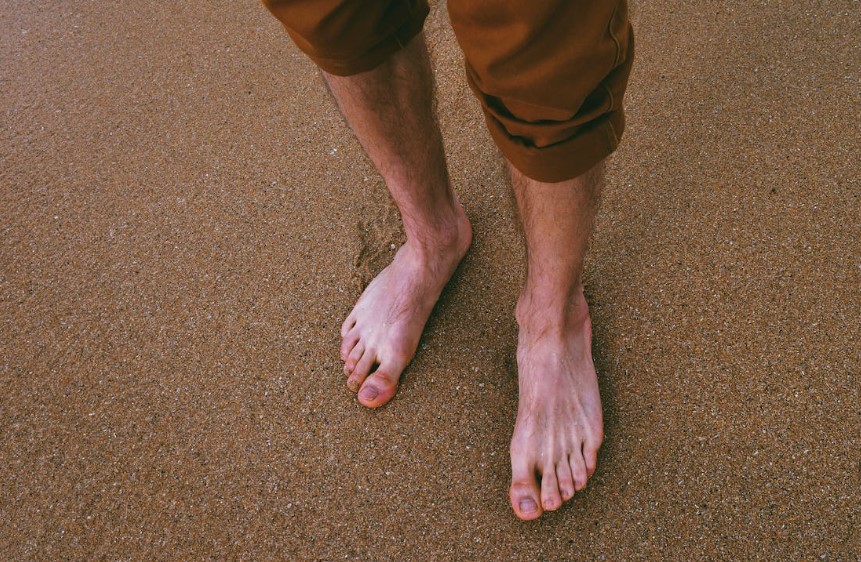How to Measure Senior’s Stride Length Accurately for Better Mobility
Are you a senior looking to improve your mobility and physical health? If so, then measuring your stride length is an important step that should not be overlooked. By understanding the importance of stride length measurement, seniors can prevent falls and injuries, enjoy improved mobility and balance, as well as improving overall physical health. In this article we will explain how stride length measurement works and how it can help you stay active for longer!
Senior’s stride length measurement and its importance
As senior citizens age, their mobility and balance can become impaired due to a variety of conditions. For senior adults, stride length measurement is an important part of assessing physical health and preventing falls or injuries. Stride length refers to the distance between heel-to-heel of each step taken while walking at a normal pace. It can be measured manually with a ruler or measuring tape, or more accurately by specialized devices such as pedometers or fitness trackers. Knowing your stride length is essential for senior citizens in order to maintain active lifestyles and remain independent in their daily activities.
How to measure stride length manually with a ruler or measuring tape
Measuring stride length manually with a ruler or measuring tape is an easy and simple process that can be done at home. To begin, place the ruler or measuring tape on the ground and have the senior walk across it while keeping their feet parallel to the markings. For maximum accuracy, it is best to take several measurements in a row and then average them together. As senior citizens walk across the ruler or measuring tape, they should ensure that their feet are placed evenly on either side of the tool so that they get an accurate reading of their stride length.
It’s also important to note any changes in gait or difficulty walking which could indicate changes in stride length. Additionally, senior citizens are encouraged to wear comfortable shoes for this exercise as ill-fitting footwear can lead to inaccurate measurements. Lastly, senior adults should also measure their stride length regularly as changes may occur over time due to age or health conditions. Keeping a regular record of stride length can help senior citizens remain active and independent in their daily activities.
The advantages of using specialized devices such as pedometers or fitness trackers for more accurate data
Using specialized devices such as pedometers or fitness trackers for stride length measurement has numerous advantages. For one, these devices are designed to be lightweight and easy to use, making them ideal for senior citizens with limited mobility. The data that is collected by these devices is much more comprehensive and accurate than manual measurements. It can provide senior citizens with detailed reports on their stride length, gait pattern, speed of walking and other important metrics which can help senior adults maintain physical activity levels.
These specialized devices can also help seniors identify potential problems before they become a major issue, allowing them to implement corrective measures if necessary. Additionally, many of these devices come equipped with alerts that can help senior citizens stay motivated and remind them of their goals. These features make using specialized devices a great tool for senior citizens looking to keep track of their stride length and overall physical health.
The benefits of monitoring Senior’s stride length
By measuring stride length, senior citizens can ensure that their physical health and mobility remain intact. This can be done manually with a ruler or measuring tape, or more accurately with specialized devices such as pedometers or fitness trackers. Knowing stride length is essential for senior citizens in order to maintain active lifestyles and remain independent in their daily activities.
Monitoring stride length provides senior citizens with numerous benefits such as being able to identify potential gait changes or difficulties in walking before they become a major issue, being able to assess physical activity levels with detailed reports from specialized devices, staying motivated by setting achievable goals and having access to alerts that remind senior citizens of those goals. Regular monitoring of stride length helps senior adults stay active and independent during their golden years and enjoy life to the fullest!
Encourage seniors to remain active and enjoy their lives!
It’s never too late to start living your best life! For senior citizens, maintaining an active lifestyle and remaining independent in their daily activities is essential for enjoying a healthy retirement. One way senior adults can do this is by monitoring their stride length regularly. By measuring stride length with either manual methods or specialized devices such as pedometers or fitness trackers, senior citizens can ensure that they are able to stay active and remain independent during their golden years. Knowing your stride length helps you assess physical activity levels and identify potential gait changes before they become a major issue. So don’t wait any longer – get out there, measure your stride length, set achievable goals, and enjoy the many benefits of staying active!
Conclusion
In conclusion, stride length measurement is an important tool for senior citizens to maintain active lifestyles and remain independent in their daily activities. By measuring stride length with manual methods or specialized devices such as pedometers or fitness trackers, senior adults can assess physical activity levels, identify potential gait changes before they become a major issue and stay motivated by setting achievable goals. So don’t wait any longer – get out there today and start enjoying the many benefits of monitoring your stride length!
Measuring Your Stride Length For The Pedometer
Sources:
1. “How To Measure Stride Length When Walking” published on Verywellfit – https://www.verywellfit.com/measure-stride-length-when-walking-2549212
2. “How to Calculate Your Walking Stride Length” published in Healthline – https://www.healthline.com/health/fitness-exercise/stride-length#how-to-calculate
3. “Measuring an Elderly Person’s Gait and Stride Length” published on PhysicalTherapyGardensManor.com – http://www.physicaltherapygardensmanor.com/measuring_elderly_persons_gait_and_stride_length/

